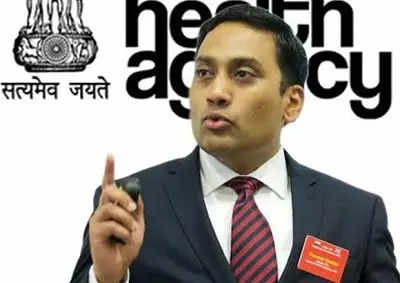
During a recent ETCIO Fireside, experts from the private and public sector gave an insight on how the Central and State governments are reassessing their workplace strategies and changing the way they provide citizen services.
The need for accessible government services was at its peak in the last year, so it is important to understand how the government bodies like the NHA were adapting to better reach out to those in need.
“The government departments, particularly the health side, took very proactive steps to engage with the people. So, we relied on traditional methods such as advertisement through mainstream media in audio, visual and also, call centers in a big way, I’m glad to share that NHA did that initiative on behalf of the Ministry of Health and Family Welfare and we did millions of calls, outgoing and also addressed incoming queries in millions,” said Dr. Praveen Gedam, Addl. Chief Executive Officer, National Health Authority & Mission Director (NDHM), Government of India.
Dr. Gedam also mentioned how telemedicine was quite restricted pre-pandemic, and during the first lockdown itself, the telemedicine policies were changed drastically with a liberal mindset to suit the harsh times.
With governments continuing on their path to leverage collaborative platforms for their daily platforms, it is paramount to develop a connected workforce with people based all over the subcontinent.
“If I have to break it down, I would start at a level where, if I have to talk about our country, we have two distinct spectrums. First spectrum is a huge talent pool, products and services which are basically Indian and on the other hand, we have a massive consumer base which is our sheer population which is spread across the length and breadth of the country. Now, the challenge is where these two spectrums meet, there is a huge gap,” explained Sameer Raje, General Manager & Head of India, Zoom Video Communications.
He further goes on to state that the talent, especially women, in the Tier 2 & 3 cities are enabled to work in good organizations or move to metropolitan cities and consumers in those cities similarly lack those choices in services.
“And in case of healthcare, if we have to talk about, there are people who need healthcare in remote villages and they’re unable to access this facility but on the other hand, we’ve got the topmost, probably are the brightest minds in the medical fraternity in the country, probably in the world, how do we get these two together and I think, the government and IT departments today need to play the role of a facilitator or an enabler, if I may say,” Raje continued.
He further explained that the right talent or service can be leveraged and the consumers can be exploited with choices by following two ways – a Government-Private partnership and secondly, by leveraging the right technology. Commending the initiatives taken by the government, especially in the field of healthcare, he added.
“One of the key success areas we saw was in the Cowin app itself and once we saw the partnerships growing between the private hospitals as well as the Government, we saw the sheer number of vaccinations going up quite high. Now, we’re talking about United Health interface, where we’re talking about healthcare facilities being available through an app or a platform for the various population or citizens of the country,” Raje said.
Providing accessible healthcare across the country should always be the goal of the Government and to do so while expanding capabilities by utilizing existing resources, especially with the challenges faced by the economy is quite the challenge.
Being able to talk to doctors at the touch of a button was just one aspect of the telemedicine, says Raje, “But the other important element which is there to this is the coordination between the field staff, as well as the healthcare professionals at the backend and third element is the governing bodies and these three elements which were brought together on collaborative platforms such as Zoom, brought a huge support to the entire ecosystem rather than working in a silo or its own compartment.”
While there have been multiple solutions in the digital healthcare space like telemedicine, hospital management, etc. it is important to keep in mind that these solutions are scattered and fragmented, with hardly any standardization or interoperability present.
“The challenge for the government is to ensure that this industry moves towards a standardization and interoperability. We are primed to be a facilitator in this regard, broadly on two parameters. One is to standardize the way digital health operates such as having a specific standard terminology, etc. and to provide an interoperable platform, something on the lines of UPI, so we are tentatively calling it UHI (Unified Health Interface) which will connect all these solutions,” said Dr. Praveen.
He explained that the UHI, launched by the Prime Minister, also known as the National Digital Health Mission, is fragmented in its growth and that it will require a lot of push by the industry side, in the form of innovation and willingness.



